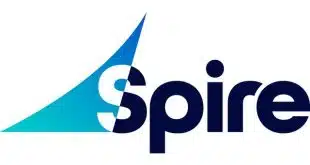Vancouver’s public-transportation authority has selected a $220 million fare-payment system from Cubic Transportation Systems Inc. that includes a transit-only reloadable contactless card but also the ability to accept general-purpose contactless cards.
Replacing proprietary fare cards with systems that add transit capabilities to contactless credit and debit cards issued by banks is the buzz of the North American public-transportation industry. Only Salt Lake City, however, has such open-fare capabilities systemwide. TransLink, the transportation agency for 22 municipalities in the scenic Vancouver area, decided to use a proprietary smart card based on proven technology before going to an open-fare system, a TransLink spokesperson tells Digital Transactions News. TransLink, formally the South Coast British Columbia Transportation Authority, oversees three light-rail lines, numerous bus routes, a ferry, and a toll bridge, and also provides funding to municipalities to maintain arterial streets.
“Our main approach to this is going to a tried-and-true platform, looking at our own needs first,” the spokesperson says. “We want to have a system that does what it’s supposed to do first before we get fancy with it.” He adds that the system “will have the capability of handling other transactions in the future.”
Holders of major-brand contactless cards such as Visa payWave or MasterCard PayPass will be able to tap those cards at Vancouver train stations once fare gates based on Cubic’s Nextfare technology are operational, and will be charged cash fares. That capability takes Vancouver a step beyond the proprietary contactless fare cards used in some big North American cities, including Chicago and Washington, D.C., but stops short of discarding a closed-loop card, as would a completely open-fare system.
San Diego-based Cubic and partner IBM Canada won a bidding process among three finalists that submitted requests for proposals in a process that started with eight consortiums, the spokesperson says. The $84 million base contract includes the design, construction, and installation of the system, including the card-reading fare gates, to be delivered by 2013, according to a Cubic release. After delivery, a 10-year services contract valued at about $13 million per year, plus a one-time $6 million transition cost, takes effect. The contract includes an option for five additional years of services. Seed money for the project was announced three years ago in the form of C$40 million from the province of British Columbia and $C30 million from Canada’s federal government, according to the TransLink spokesperson.
Cubic, which deferred to TransLink when asked for comment, said in its release that Vancouver’s would be the third-largest fare system it has ever built, behind London and Sydney, Australia. Cubic is familiar with Vancouver, having designed its current payment system that accepts magnetic-stripe fare cards. That system began with a 1997 contract.
About one-third of TransLink riders pay with cash while the others pay with various media that include the mag-stripe card and monthly passes. The system operates on a proof-of-payment model in which riders show roving conductors their receipts or passes. “We have been operating under a very low-tech fare system,” the TransLink spokesperson says.
Cubic’s release says the Vancouver fare gates will read “other media” besides bank cards, presumably contactless fobs or stickers that attach to cell phones and are linked to the customer’s bank or credit card account.





